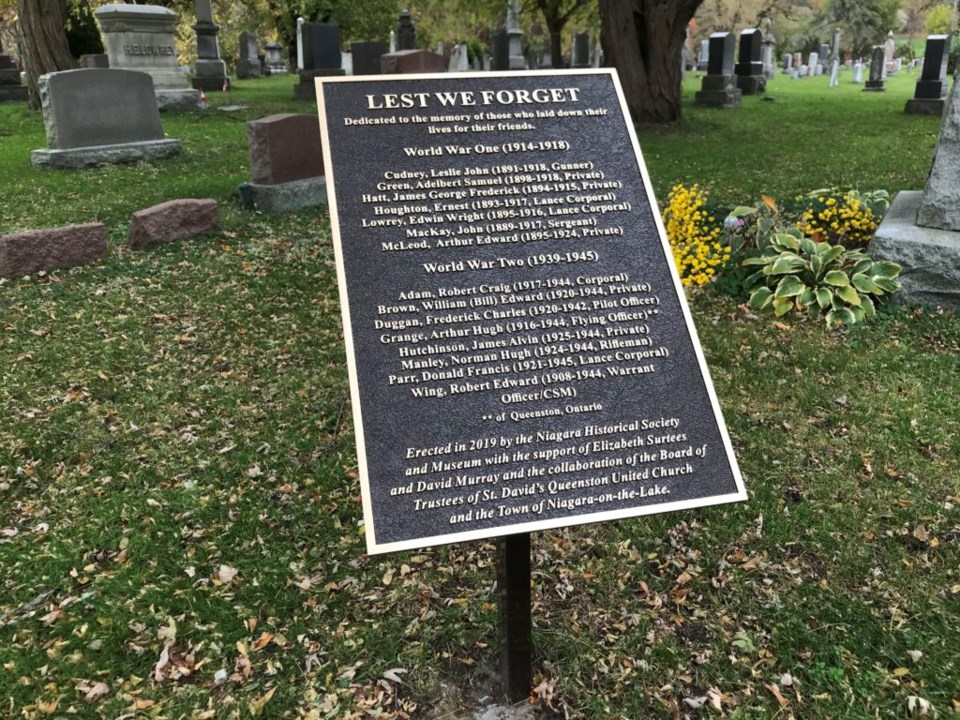
When St. Davids-Queenston United Church commemorates Remembrance Sunday, members will have reason to celebrate.
On Sunday, Nov. 10, the Niagara Historical Society will be unveiling a Lest We Forget plaque on the edge of the historic church cemetery, says church board chair Steve Hardaker.
The plaque is dedicated to soldier seamen and airmen from St. Davids and Queenston who fought and died in the First and Second World Wars, he says.
The church was contacted by David Hemmings, president of the historical society, with a request to locate the plaque in the church cemetery.
Hemmings says he realized during last year’s Queen Street Remembrance Day service, listening to speeches by community leaders, that although the “war dead” are commemorated each year, there is very little known about them.
Working from the plaque at the Royal Canadian Legion Hall, members of the historical society began to document those named on the plaque, which is the most comprehensive list in NOTL.
The museum also has a complete listing of those who did not return from the First and Second World Wars on its website, including birth and death dates, the birth and death or burial places, the rank, the regimental number, the regiment or squadron and some operational information for every soldier or airman on our cenotaphs and plaques.
When he speaks of the St. Davids Plaque at church Sunday, he will also detail how difficult it was to research that information and find accurate details, and how especially horrific the First World War was, with men who died up to a decade after it ended, ending their lives destroyed by what is now understood as PTSD.
And many died not from active duty but of disease, the effects of training and exposure, or accidents in Britain or Canada.
St. Davids, he says, which was a small rural village in those days, “contributed extraordinarily to those who sacrificed their lives for our country in both wars. Almost one quarter of our municipality’s fallen soldiers and airmen came from St. Davids. Of these locals of St. Davids, five out of seven in WWI and six out of eight in WWII died in action.”
The cemetery, the location chosen for the plaque, is historic, as is the church, says Hardaker, and a fitting place for the plaque.
The church history goes back to 1788, when Christian Warner, a British Loyalist joined Butler’s Rangers. A Methodist who held meetings in his home, and built Warner’s Meeting House.
The church was relocated to be more central, says Hardaker, and was built in the middle of the historic cemetery on land donated by Major David Secord, after whom the village of St. Davids is named after, and who was later buried in the cemetery.
This first church was burned with the village by American soldiers in 1814, and a new church was built in 1815, not completed until 1843.
It eventually had to be torn down. The current church was built in 1954, and became St. Davids-Queenston United Church in 1996.
The plaque will be unveiled after the Remembrance Sunday service, which starts at 10:30 a.m. The unveiling will take place at about 11:30, says Hardaker, led by Elizabeth Surtees and David Murray, members of the Niagara Historical Society who donated funds for the plaque.